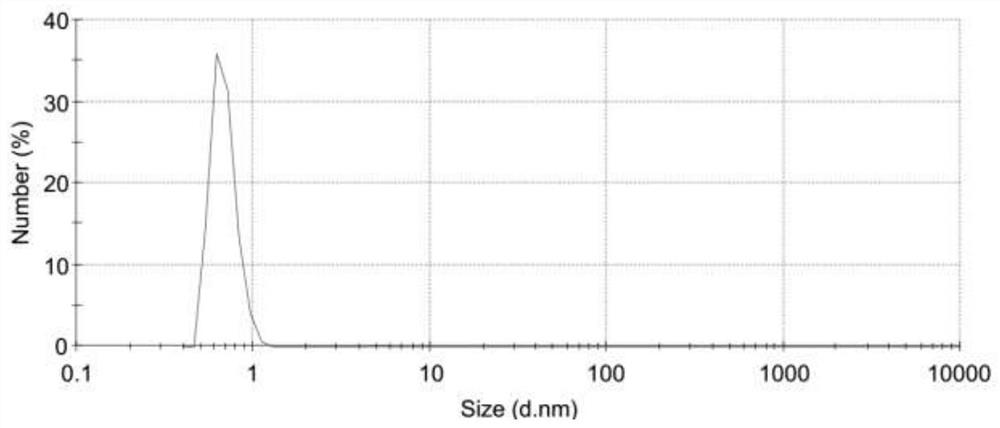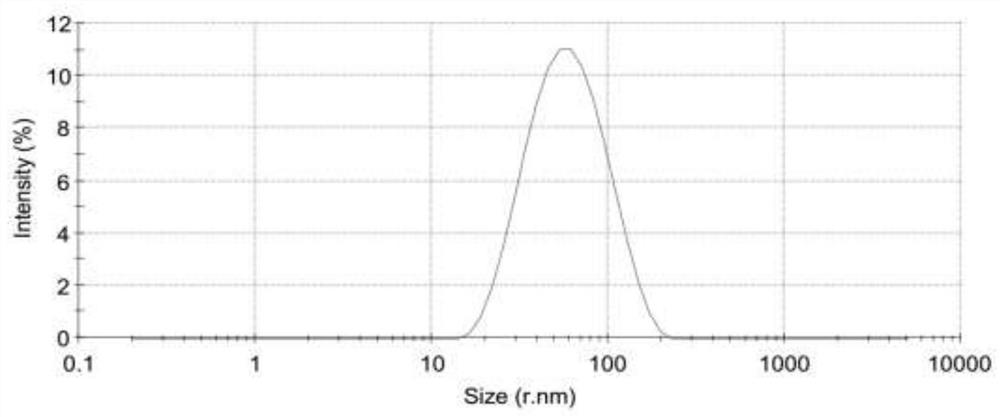Therapeutic application of heparin-iron complex on chronic inflammatory anemia
A chronic inflammation and compound technology, applied in the field of medicine and biology, to achieve the effect of shortening bleeding time, prolonging bleeding time and reducing anticoagulant activity
- Summary
- Abstract
- Description
- Claims
- Application Information
AI Technical Summary
Problems solved by technology
Method used
Image
Examples
Embodiment 1
[0039] The mensuration of embodiment 1 heparin and heparin iron particle size
[0040] The experiment was set up with heparin group and heparin-iron complex group. Weigh an appropriate amount of heparin and dissolve to obtain a heparin solution.
[0041] Preparation of heparin-iron nanocomposites: Slowly add NaOH solution to FeCl 3 In solution, according to the molar ratio of Fe 3+ :OH - = After 1:2 mixing, adjust the pH to about 2.8 to form ferrous ions [Fe(OH) 2 ] + solution. According to the number of uronic acids in the heparin disaccharide structure, the number of sulfate groups and carboxylate groups contained in the heparin disaccharide structure, and [Fe(OH) 2 ] + Ion binding, prepared into heparin: [Fe(OH) 2 ] + = 1:1, 1:2, 1:3, 1:4 complex solutions, respectively called heparin iron complex 1, heparin iron complex 2, heparin iron complex 3, heparin iron complex 4, ultrasonic conditions Slowly add the ferrous ion solution into the heparin solution, and conti...
Embodiment 2
[0043] Example 2 Investigation of Heparin Iron Complex Targeted Inhibition of Hepcidin in Anti-inflammatory Anemia
[0044] 1. Effect of heparin-iron complex on hepcidin level in plasma of inflammatory anemia model mice
[0045] Establishment of inflammatory anemia mouse model, intervention and blood sample collection: SPF grade BALB / c mice, 6-8 weeks old, weighing 20-25g, were fed adaptively for 1 week, at an ambient temperature of 25-28°C, free to eat and drink, and drink water. They were randomly divided into 4 groups by digital method, namely, the normal control group, the model group, the heparin group, and the heparin-iron nanocomposite group. The model of inflammatory anemia was established by injecting 0.1mL / 20g of turpentine oil into the fat pad of both shoulder blades of mice; the heparin group was injected with 6mg / kg of heparin through the tail vein every day, and the heparin-iron nanocomposite group was injected with 6mg / kg of turpentine through the tail vein ever...
Embodiment 3
[0053] Example 3 Investigation of the anticoagulant effect of heparin-iron complex
[0054] The experiment was divided into three groups: normal group, heparin group and heparin-iron nanocomposite group. The mouse tail cutting method was used for the experiment. After 20 minutes of administration, the mouse was placed in a fixer, the tail was vertical, and the mouse vein was punctured, causing the mouse's vein to bleed. The timing started from the blood overflowing by itself, every 30s The blood was aspirated with filter paper until the blood naturally stopped flowing out, and the bleeding time of mice in each group was recorded.
[0055] Experimental results such as Figure 5 shown. The results showed that, compared with the normal group, heparin prolongs the coagulation time very significantly (P0.05). This shows that the heparin-iron complex developed by the present invention can effectively eliminate the anticoagulant activity of heparin, and will be safer when used in ...
PUM
| Property | Measurement | Unit |
|---|---|---|
| particle diameter | aaaaa | aaaaa |
| particle diameter | aaaaa | aaaaa |
| particle diameter | aaaaa | aaaaa |
Abstract
Description
Claims
Application Information
 Login to View More
Login to View More - R&D
- Intellectual Property
- Life Sciences
- Materials
- Tech Scout
- Unparalleled Data Quality
- Higher Quality Content
- 60% Fewer Hallucinations
Browse by: Latest US Patents, China's latest patents, Technical Efficacy Thesaurus, Application Domain, Technology Topic, Popular Technical Reports.
© 2025 PatSnap. All rights reserved.Legal|Privacy policy|Modern Slavery Act Transparency Statement|Sitemap|About US| Contact US: help@patsnap.com



